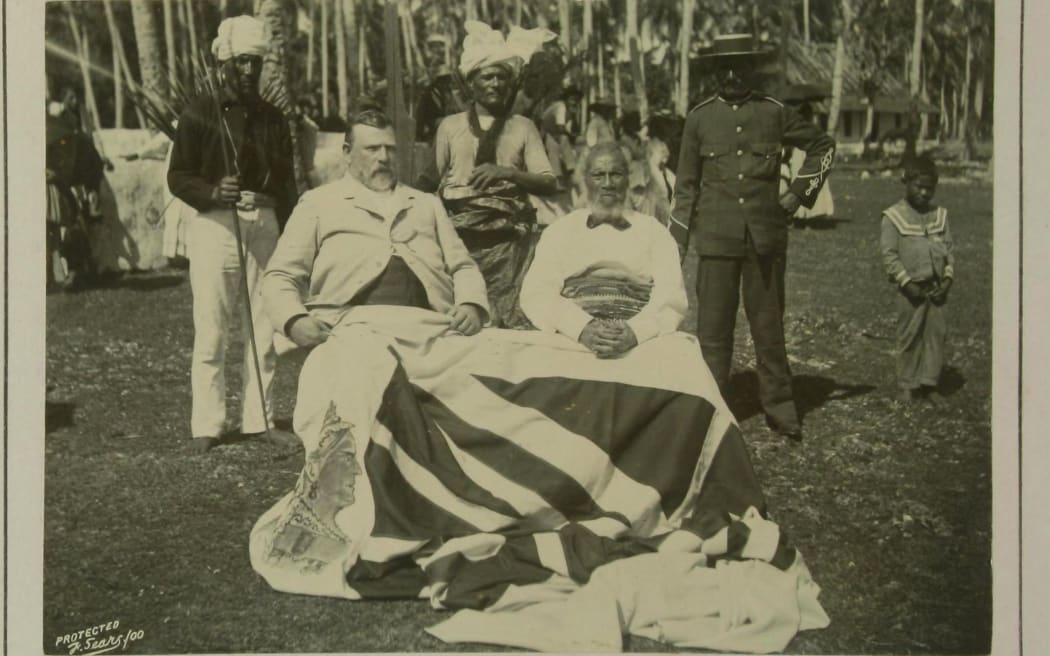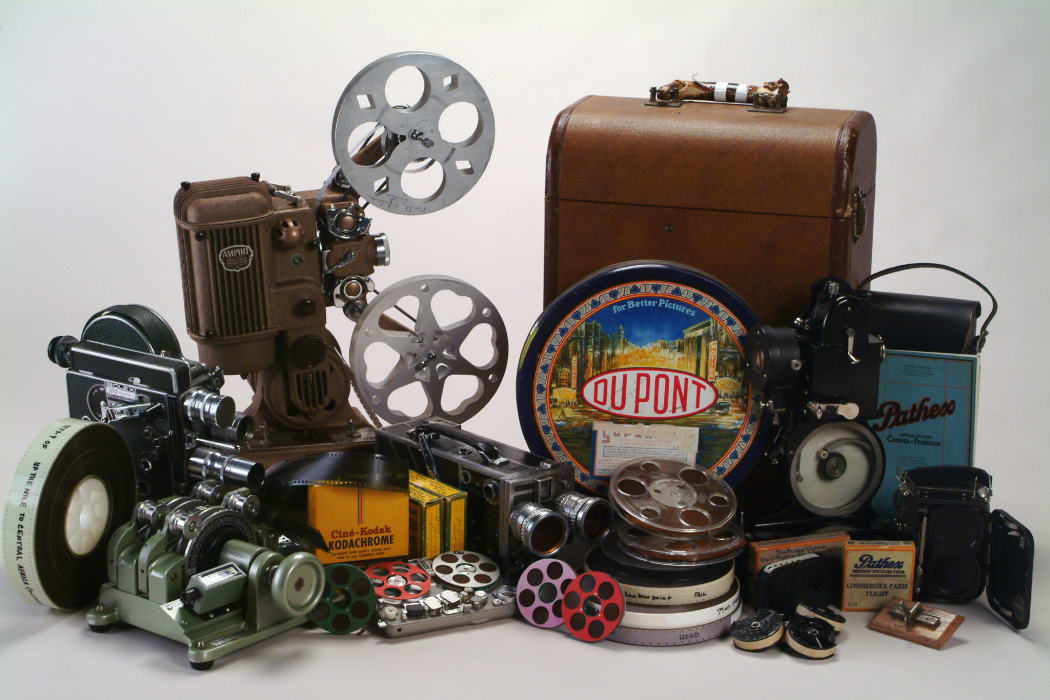The National Anthropological Film Collection at the Smithsonian Institution in Washington D.C. will archive historical Pacific films as part of a project focusing on indigenous people called Recovering Voices.

‘The two kings, “Dick” and Togia’ under the grand old flag. NZ Premier Richard Seddon toured the Pacific in May 1900. He's pictured with King Togia-Pule-toaki. Photo: Images from: Niue 1774–1974: 200 years of contact and change. Published by Otago University Press
The Pacific forms of the collection is part of the eight million feet of film the collection holds.
The Pacific collection goes back to materials collected during the U.S. Exploring Expedition, which was from 1838-1842 and the Anthropology and Global Indigenous Peoples group will be doing research cataloguing in 2018 in order for the audience to have a description into the footage.
Anthropologist Joshua Bell wants to make the large collection of films more accessible to the Pacific community around the world.
"The reason we're interested in that is because there's a lot of stories about linguistic and cultural decline in terms of languages, going silent, cultural practices no longer being carried out in various communities.
"At the same time that's happening, there's also resurgence with indigenous communities around the world," he said.
Mr Bell said there is a possibility that some of the films may not be viewable and the project will involve finding what can and cannot be used.
"Part of it what the team will be doing is discerning what is viewable and to then engage with those.
"The earliest material we have from Samoa is from about 1918, by an individual called Chester Outing who I sadly don't know much about.
"What we will do is research together as a team and bring in our knowledge to supply the information needed for the films," he said.

Motion picture ephemera, 2003 Photo: Supplied: Donald E. Hurlbert
Part of the collaborative team will be a Pasifika graduate from New Zealand, Kate Percival, who has been selected as an intern to help research catalogue the materials.
Mr Bell said this means Ms Percival will be enhancing the records as the team know what a given film is about and shows, but needs the description to be further refined as well as more work done to give the film context.
Ms Percival said it will be a three month internship starting in February under the guidance of Mr Bell.
"I will be help write descriptions on what is taking place in the film and researching the context behind the film.
"I used to work with analogue films before and develop it, so I am excited to see the physical films in person," she said.
The Smithsonian Institute Pacific archives was established in 1975 and Mr Bell said the collection covers the whole Pacific region.
"We have films from Papua New Guinea, Hawaii, French Polynesia, Tonga, Samoa and Kiribati.
"We have a lot of films from Kiribati and a lot of films from Micronesia because of the strong U.S. presence there," he said.
Recovering Voices is an ongoing project that aims to cover all indigenous communities around the world.


